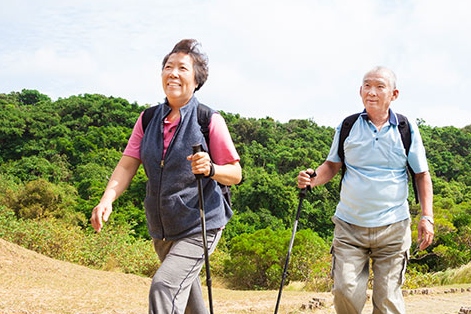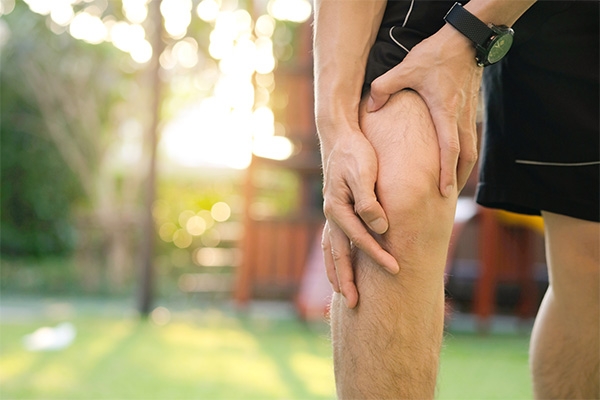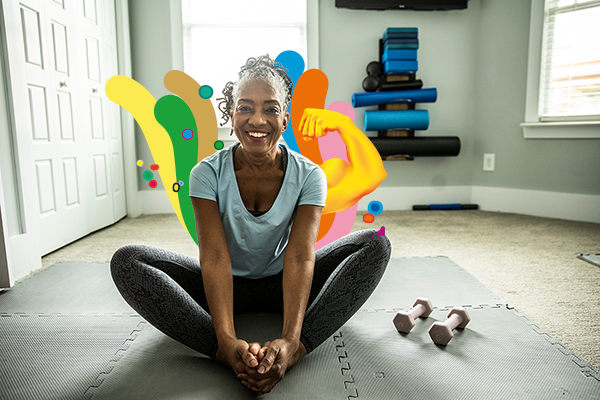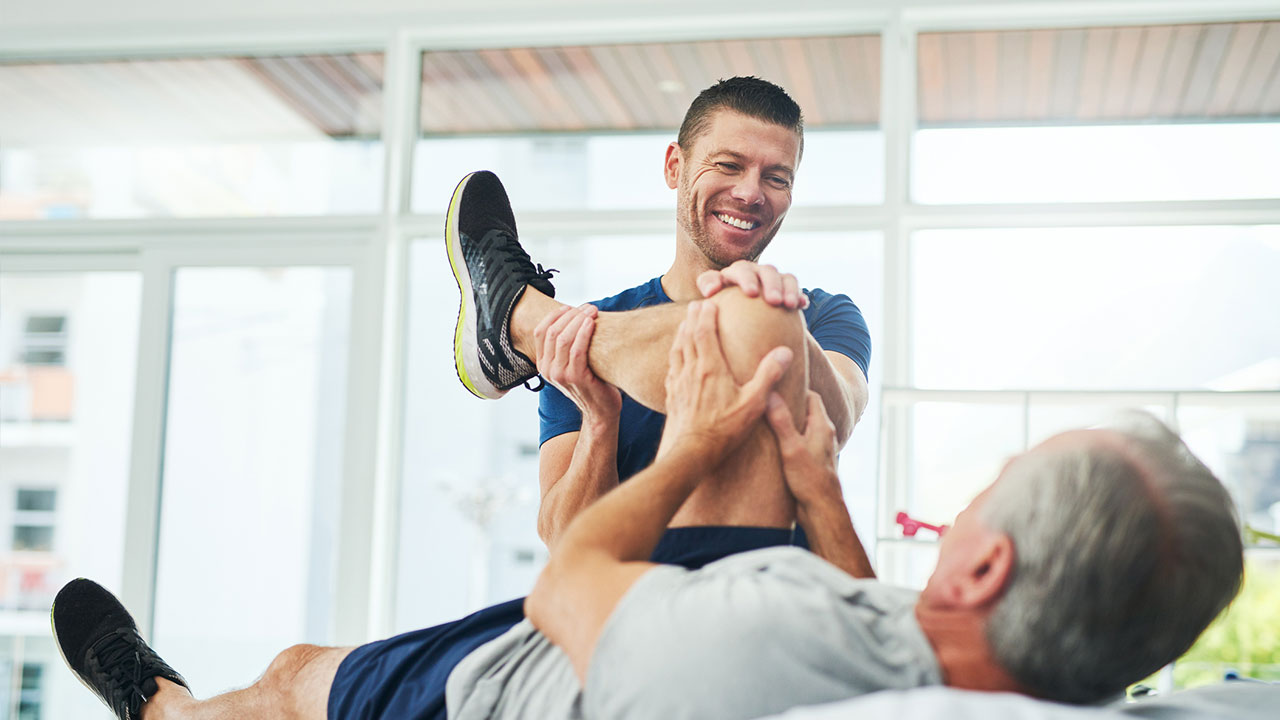Written by Medibank
July 2023
When pain is persistent, it does more than hurt – it can begin to affect everything from your mood to how well you’re able to sleep and even your mental health and wellbeing.
This makes it really important to take steps to manage any joint pain you may be experiencing, and thankfully, even though not every type of joint pain is curable, there are several techniques that have been shown to be effective in providing respite.

What is joint pain?
Commonly triggered by inflammation or physical damage, joint pain can either be acute, so that it comes on quickly and lasts a short time, or chronic, where the pain develops more gradually and lasts long term.
There are a few different joint pain causes, but while acute pain is more likely to be the result of an injury, chronic joint pain is more likely to be caused by an underlying condition, such as osteoarthritis.
Types of joint pain
Some joints are more susceptible than others when it comes to being affected by pain. Five of the most common types of joint pain include the following:
Knee pain
Damage to specific parts of the knee as well as arthritis are common causes of knee pain. In fact, the knees are one of the joints most commonly affected by osteoarthritis. Knee pain risk factors include doing certain sports, such as skiing and basketball, having weak leg muscles and carrying too much weight.
Hip pain
This can have a variety of causes, including injury, as well as lower back problems or a pinched nerve, but, like the knees, the hips are also a common site for osteoarthritis. Hip pain can be particularly noticeable when you’re using the stairs, exercising or if you’ve been sitting or standing for an extended period of time.
Shoulder joint pain
Like hip pain, this can also be due to a wide variety of causes, including injury, age-related wear and tear, poor posture, overuse and, less frequently, arthritis.
Finger joint pain
Any joint in your fingers or thumbs – as well as your knuckles and wrists – can be affected by one of many types of arthritis, leading to joint pain.
Menopause joint pain
Menopause and the period before it, called perimenopause, can cause painful joints. Changing hormone levels, particularly a drop in oestrogen, is thought to be the main cause.

Better Knee, Better Me
This program typically combines personalised plans for exercise, weight loss and pain management that aims to help eligible members^ better manage painful knee osteoarthritis and help reduce the impact it has on their quality of life. Clinical and product eligibility criteria apply. Your program journey may be different depending on your needs.
^ Available, where clinically appropriate, to Medibank members aged 18 and over with resident hospital cover that includes joint replacement surgery who have been experiencing chronic knee pain on most days for the past 3 months, are above a healthy weight (BMI 25 or more), can speak and read English and can access a telephone and internet.
Joint pain relief: 4 common solutions
The approach to pain relief that’s right for you will depend on both the type of joint pain you have as well as which techniques work best for you. It’s always important to be guided by your doctor – particularly when it comes to the use of pain relief medications – but here’s a guide to what’s available.
1. Knee joint pain relief
Treatment for acute knee pain might include avoiding putting weight on it, strapping to support the knee and applying an ice pack to it every few hours. Taking a painkiller may also help.
If your knee pain is because of osteoarthritis, there are a number of treatment approaches you can try, including exercises that strengthen the muscles around your knee, taking an anti-inflammatory pain medication or using a cream or gel that contains an anti-inflammatory medicine. Losing even just a small amount of weight may also reduce symptoms of knee osteoarthritis.
2. Hip joint pain relief
Depending on the cause, treatment for hip pain may include physiotherapy, using pain relief medicines and gentle exercise. You may also get some relief by resting the joint or applying heat or ice.
If your hip pain is caused by osteoarthritis, then exercise under the supervisions of a health professional – including strengthening exercises – is one of the most important treatment strategies. Water-based exercises and tai chi may also be beneficial. Using an anti-inflammatory medicine can also be effective, although anti-inflammatory creams and gels tend not to help ease hip osteoarthritis pain. For some people, losing weight may also provide some pain relief.
3. Complementary therapies
A variety of these have been researched to try and determine their effectiveness in providing relief from joint pain caused by arthritis, including techniques such as acupuncture as well as supplements such as green-lipped mussel, rosehip and chondroitin and glucosamine.
Unfortunately, apart from the use of fish oil for rheumatoid arthritis, which does have strong evidence to support its effectiveness, most complementary therapies that have been studied tend to show conflicting results. As a result, doubts about their effectiveness remain.
It’s also true that some complementary therapies that make claims about helping to relieve pain for people living with arthritis have very little or even no research behind them.
If you want to try a complementary therapy for your osteoarthritis-related pain, it’s important to talk to your doctor to make sure it won’t interact with any other treatment you’re using. Bear in mind that all treatments, even ‘natural’ ones, can have side effects.
4. Understanding pain
Research suggests that making the effort to understand how pain works as well as how you respond to it, may help to prevent chronic pain from controlling your life.
Something called ‘pacing’, where you learn to plan daily activities and exercises for those times when you’re experiencing less pain can also be effective when it comes to managing pain caused by osteoarthritis.
Undergoing pain coaching or cognitive behaviour therapy may also help and using mindfulness techniques has been shown to be effective, too. For example, some research shows that when people living with knee osteoarthritis practise meditation regularly, they experience a reduction in knee pain and dysfunction and an improvement in mood.
Other mindfulness techniques that may help you develop pain coping skills include relaxation techniques and mindfulness-based stress reduction.
Arthritis Australia has a variety of resources dedicated to helping people manage and live with arthritis, while Chronic Pain Australia has resources to help you learn more about living with and managing pain.
Read more about joint pain
Looking for something else?
Visit Joint health for more information.
Things you need to know
While we hope you find this information helpful, please note that it is general in nature. It is not health advice, and is not tailored to meet your individual health needs. You should always consult a trusted health professional before making decisions about your health care. While we have prepared the information carefully, we can’t guarantee that it is accurate, complete or up-to-date. And while we may mention goods or services provided by others, we aren’t specifically endorsing them and can’t accept responsibility for them. For these reasons we are unable to accept responsibility for any loss that may be sustained from acting on this information (subject to applicable consumer guarantees).




